Scott Miller’s 2017 Baseball Hall of Fame Ballot – Bleacher Report
Maybe Barry Bonds, Roger Clemens, Manny Ramirez and others who were on the cutting edge of the performance-enhancing-drug era eventually will be voted into the Hall of Fame by the general electorate. Maybe last month’s election of former commissioner Bud Selig will be the tipping point.
But that’s nonsense.
And it’s largely a non sequitur.
One new “narrative” to emerge this winter in advance of next Wednesday’s announcement of the 2017 Hall of Fame voting results is this: If Selig, who oversaw the game when it reeked of cheaters who distorted the record book, is in the Hall of Fame, then it gives voters who in the past have not supported the steroid crowd the green light to reverse course.
But it isn’t that clear-cut. Selig, like fellow Hall of Famer Tony La Russa three years ago, whose greatest managerial successes came with PED-enhanced players in his lineups, was put into the Hall of Fame by a small, 16-person veterans committee, not by the general electorate.
I was not on those committees and did not cast a vote for them. So why should that compel me to cast votes for those who clearly cheated the game and their fellow players when I haven’t done that in any of my previous 17 years of voting?
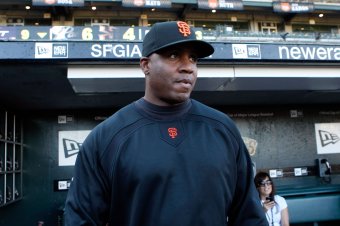
Justin Sullivan/Getty Images
Another issue, and one I believe too few people understand when it comes to Hall of Fame voting, is that voting is a one-man (or woman), one-ballot exercise. This isn’t groupthink, and it isn’t (and shouldn’t be) some sort of organized movement to try to push a single agenda through.
Personally, as long as the so-called “character clause” is included in election rules (“Voting shall be based upon the player’s record, playing ability, integrity, sportsmanship, character and contributions to the team(s) on which he played”), I do not intend to vote for those buried in steroid guilt or under a mountain of circumstantial evidence.
Now, if some of those players wind up being voted into the Hall despite my stance, that’s how the breaking ball breaks. If Bonds, or Clemens, or anyone else shows up one day on the stage at Cooperstown, if that’s the will of the voters, then it will not be a time to rant and rave and throw fire and brimstone. It will be a time to celebrate them, even if some of us disagree with the choice.
This is a miserably difficult topic, and like so many other issues in this country right now, it is a bitterly divisive topic. There are no foolproof, correct answers. But I believe each voter must come to terms with their conscience. Some of those whom I respect the most in the baseball-writing business, including some close friends of mine within that group, vote for known steroid users and always have. I disagree with them, and they with me. And they have very good reasons, and I respect their opinions. That’s life. Not everyone is going to see things your way.
Some voters, who rightfully are uncomfortable with the baseball writers’ doubling as the “morality police,” have asked the Hall of Fame to issue guidelines regarding the vote. Hall officials have responded that they are very pleased with the way the writers have conducted the voting over the decades and are refraining from issuing guidelines.
To me, however, the Hall issued its guidelines long ago with the aforementioned character clause. If one day the tide turns and I’m in the minority, so be it. If one day Bonds, Clemens and Ramirez are elected to the Hall, a part of me will be relieved and happy, because it’s not right for a Hall of Fame not to include the very best players. But it’s less right to turn a blind eye to the cheating, and that includes everyone from the commissioner to the owners to the players’ union and the media.
In the end, as with any vote, you must assess what’s important, assimilate the information and come to a conclusion in which you can look yourself in the mirror. So that’s a big part, as always, of how I filled in this year’s Hall of Fame ballot.
Jeff Bagwell
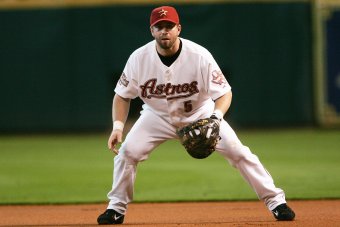
Stephen Dunn/Getty Images
This is his seventh year on the ballot, and it is the first time I voted for him. Bagwell, along with Mike Piazza (who was elected to the Hall last year), is one of those gray-area players about whom there has been some steroid suspicion but never any proof. As such, from his first year on the ballot, I wrote that I would wait a few years before voting for him while waiting for any new information to surface. It hasn’t, and he’s never been formally linked to steroids. As Jay Jaffe notes in his always essential JAWS Hall of Fame evaluation method, Bagwell ranks as the second-best first baseman in the post-World War II era.
Bagwell missed election last year by a mere 15 votes, and after Piazza’s induction, Bagwell should clear the bar this year. He won the 1994 NL MVP award and ranked in the top 10 in voting five other times, including finishing in the top five twice. His career on-base percentage of .408 ranks 39th all-time.
Vladimir Guerrero
Maybe the best bad-ball hitter in baseball history, Guerrero could do damage to pitches an inch or two off the ground, an inch or two over his head or anywhere in the strike zone. He was a marvel to watch, easily one of the most dominant hitters of his era, doing it for both average (.318 career average) and power (449 career homers).
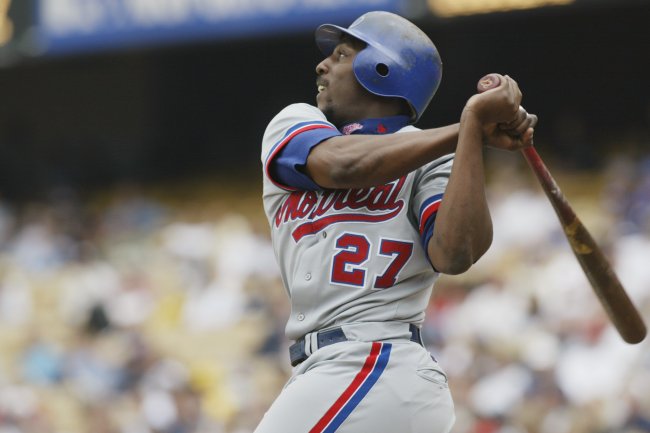
Stephen Dunn/Getty Images
He hit .300 or higher in 13 seasons, including 12 in a row from 1997 to 2008. He hit 30 or more homers eight times and knocked in 100 or more runs 10 times. Before his legs started to deteriorate, Guerrero also put together two 30-homer/30-steal seasons (and he had one 39-homer/40-steal season).
He led the league in intentional walks five times, signifying how respected he was by rival clubs. As B/R colleague Danny Knobler notes, Guerrero in 2006 compiled as many unintentional walks as intentional walks (25 of each), which doesn’t make him overly friendly to modern analytics. Nor does his play in right field measure up that well in the advanced stats field, though he made up for part of that with his exceptionally powerful arm. Nevertheless, Guerrero’s power and dominance put him on my ballot.
Trevor Hoffman
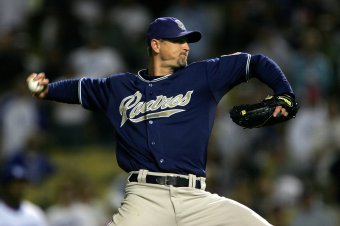
Stephen Dunn/Getty Images
Tough crowd, the voters, when it comes to closers. It was utterly predictable last year that Hoffman would not reach the 75 percent threshold needed for election based on history: Nobody who pitched exclusively as a reliever throughout his entire career has ever been elected to the Hall on his first ballot. John Smoltz and Dennis Eckersley each worked as a starter at times during his career. Hoffman never did.
That said, whatever your feeling on closers—and I’ve graded them harshly in the past (I did not vote for Lee Smith, and I do not vote for Billy Wagner)—601 career saves is a staggering number. Hoffman is a Hall of Famer; the only question is how long it will take him to reach 75 percent of the vote. This year? Next year? Stay tuned.
Jeff Kent
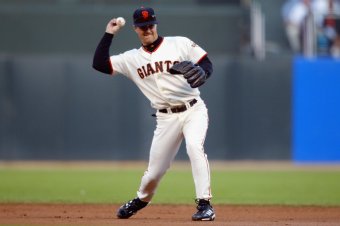
Jamie Squire/Getty Images
I voted for Kent because his 351 career home runs as a second baseman rank him as the all-time leader at the position. That said, I’m still not 100 percent comfortable with myself for having started voting for him a couple of years ago. He played in an offense-oriented era in which new ballparks became more hitter-friendly, and defensively he was no gem.
As I wrote last year, he was a very good player. But one of the best of all time? Some numbers suggest yes. But body of work overall…he’s borderline, no question.
Edgar Martinez
Along with Bagwell, the biggest change in my ballot. This is the first time I’ve voted for Martinez, and it is his eighth year on the ballot. Not sure if that’s a him-problem or a me-problem—maybe a little of both.
Bottom line: In the past, I withheld my vote because, to me, if you’re a one-dimensional player (read: closer or DH), your numbers had better be off the chart in whatever area you specialize. Martinez’s traditional numbers are not. He finished with only 2,247 hits and 309 homers. Both are light in terms of a DH and the Hall.
Yet every year, Martinez is one of the guys I have agonized over. Three things spurred me to change my mind late in the game on him.
First, his .418 career on-base percentage. While the homers don’t knock your socks off, that on-base percentage does. He ranks 21st in history. That’s the number that kept nagging at me during the years I did not vote for him. It’s sensational.
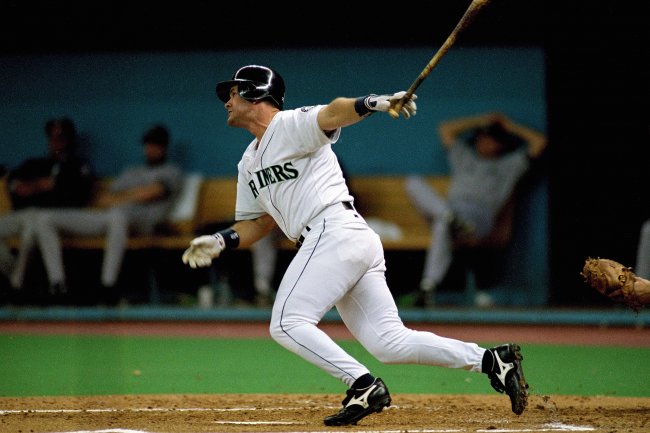
Stephen Dunn/Getty Images
Second, Martinez’s 1995 Division Series against the New York Yankees was one for the ages. He hit .571 (12-for-21), reached base 18 times in five games and knocked in 10 runs. Furthermore, his 11th–inning double clinched the series for the Mariners in Game 5, which helped turn Seattle into a baseball city and spurred taxpayers to vote for what today is Safeco Field. It was one of the greatest baseball moments in the history of Seattle, and while that does not fit into your traditional statistics, there should be room in the Hall of Fame for that kind of history.
Third, too many of Martinez’s peers during the time in which he played have told me over the years that he was the best hitter they ever saw, or that he should be a Hall of Famer, or some combination of the above.
The latest came last spring during a long conversation with Hall of Famer Reggie Jackson at Steinbrenner Field in Tampa, Florida. I was working on a piece on Red Sox DH David Ortiz in advance of his retirement and spoke with Reggie about Ortiz. It was during that conversation when Jackson, unsolicited, passionately told me that not only does Ortiz belong in the Hall, but so does Martinez.
All of this, over all of these years, has conspired to convince me that maybe I’ve been wrong in not voting for Martinez, and I’m fixing that now.
Fred McGriff
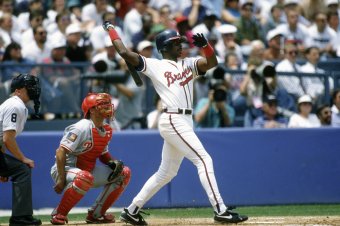
Focus On Sport/Getty Images
One of the greatest hitters of his era, McGriff‘s biggest problem is that the guys who were gobbling steroids during the 1990s put up enough cartoon numbers to shove McGriff into the shadows and relegate him, nearly, to forgotten-man status. Maybe if he had hit just seven more homers to reach that big ol‘ round number of 500, he would get more Hall of Fame support. As it is, he checked in at just 20.9 percent of the vote last year, far below the 75 percent needed.
Still, 493 homers make a pretty good case. He ranks 28th all-time, and as I wrote last year of McGriff, remove some steroids frauds from the list and he comes close to cracking the all-time top 20. Not a slam-dunk Hall of Famer, to be sure, but borderline. And borderline enough that I would vote for him.
Mike Mussina
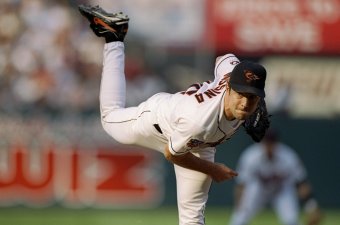
Doug Pensinger/Getty Images
Time and place, to me, make Mussina more of a candidate than you might think. That time and place were…the 1990s and the 2000s, and the American League East. Pitching in a loaded division against some of the best New York Yankees teams of all time, and against many other bashers, and then pitching for the Yankees against historically good Boston Red Sox clubs, and more bashers, Mussina compiled 270 wins and a sterling 3.68 ERA. He was as consistent as a metronome, compiling 11 seasons of 15 or more victories.
While I know wins aren’t as sexy as they once were based on today’s analytics, to rack up that many means Mussina was in the game enough to make a difference on a heck of a lot of occasions. We know starting pitchers have been underrepresented in Cooperstown since the inception of the DH, and Mussina certainly is deserving.
Tim Raines
Raines is the best leadoff hitter this side of Rickey Henderson, and his .385 career on-base percentage is good enough to play on any team. His stolen-base rate of 84.7 percent ranks second-best all-time among those with 300 or more attempts.
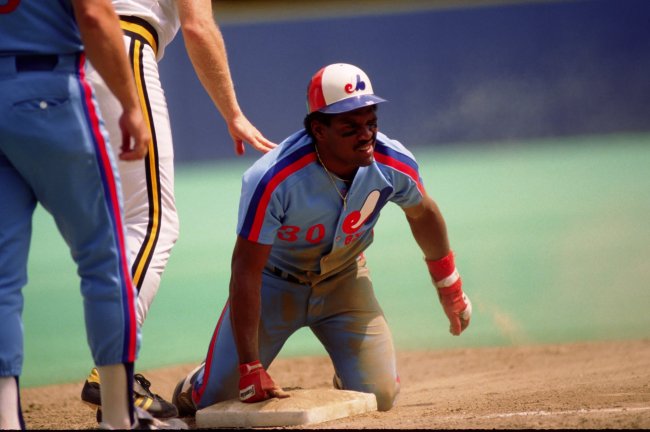
George Gojkovich/Getty Images
Raines received 69.8 percent of the vote last year, and he’s still got some running to do: This is his 10th and final year on the ballot. If he doesn’t bump up to 75 percent of the vote, his Cooperstown fate will be left in the hands of future veterans committees. Here’s hoping he cruises into one more base this winter—a plaque in Cooperstown.
Close Calls
A few words about my near misses:
Curt Schilling
This has zero to do with his politics and everything to do with his middling 216 career victories and a whole lot of mediocre seasons. I know some numbers (specifically, his strikeouts) point to Cooperstown, but I would take Jack Morris in his prime any day over Schilling in his prime. And if there is no place in the Hall for Morris…
Ivan Rodriguez
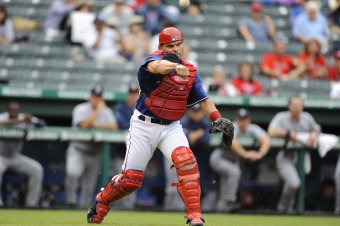
John Williamson/Getty Images
One of the best catchers of all time without a doubt, Rodriguez under most circumstances would be a slam-dunk Hall of Famer. But for now, I’ve got him in a holding pattern, similar to where I had Piazza and Bagwell. In his book Juiced, Jose Canseco details injecting Rodriguez with PEDs. Pudge has since denied taking PEDs, so here’s another gray area.
Because of that, I’m holding off for a bit, and let’s see if any new information emerges and what Rodriguez says about it. He will be on the ballot for 10 years; I’d rather wait a bit for reasons I just stated rather than rush to vote him in right away.
Larry Walker
I looked hard at Walker, and while he’s very close, in my book he falls short of being a Hall of Famer. His offensive numbers were good, especially in the Coors Field years, but he was injured and off the field far too often. During his 17-year career, Walker played in as many as 150 games once, and he played in as many as 140 games just four times. I look at Walker and I see a very good player who could have been great. I do not see a Hall of Famer. His great moments simply weren’t great long enough.
Scott Miller covers Major League Baseball as a national columnist for Bleacher Report. Follow Scott on Twitter and talk baseball.



